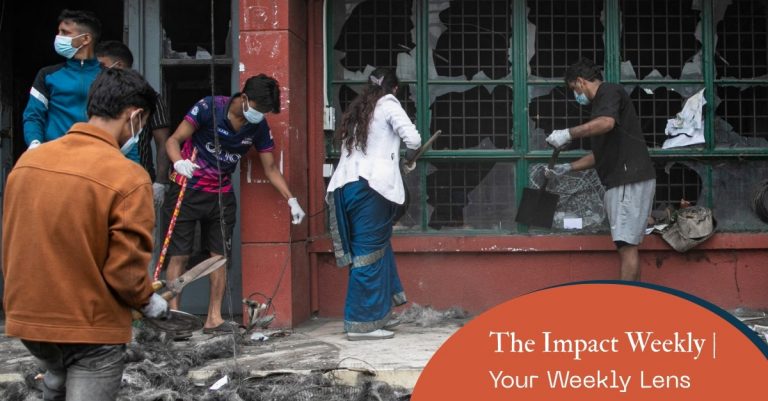Nepal’s cricket has found a booster after a blockbuster inaugural edition of the Nepal Premier League (NPL) held from November 30 to December 21, 2024.
The first edition led to cricket fever reaching an all time high as the tournament reignited flame of passion, bringing Nepal cricket enthusiasts across the globe on the field and the digital screens in celebration of sport they hold dear.
While it’s too early to navigate the NPL’s financial success. As assured by Cricket Association of Nepal (CAN) Secretary Paras Khadka in multiple public events, it would require at least three years to put all economic metrics to test.
However, to make an anticipation for the second edition, it’s worth looking at some models, numbers, and how the first NPL kicked off.
How CAN earns money?
Cricket lovers’ excitement with the teams’ phenomenal display in this edition must have surged NPL’s brand value in the market. The match tickets were already a highly sought commodity in the winters of November through December.
But it’s much more than ticket sales CAN earn from in the tournament. Let’s break it down.
AI generated image/Napkin
Franchise Licencing
CAN had called on both national and international companies for applications to own a team through an open bidding in August. Applicants had to fill a RFP (Request for Proposal) form, paying a non-refundable fee of NRs 100,000.
CAN issued a mandate, where only legally registered and VAT and other taxes cleared companies take part in the bidding.
Eight franchisee teams out of 16 applicants, representing different cities and provinces in Nepal, were awarded the licences (subject to renewal each year) at a total price of NRs 168.9 million.
Here’s the breakdown of who owned which team at what prices:
| Franchise Licence Price | ||
| Teams | Owner Companies | Amount (NRs in million) |
| Biratnagar Kings | MAD Dreams Sports | 15.10 |
| Janakpur Bolts | Dreams Sports | 20.50 |
| Kathmandu Gurkhas | Kantipur Sports Development Ltd | 33.33 |
| Chitwan Rhinos | Chitwan Medical College | 17.60 |
| Pokhara Avengers | Nepal T-20 Pvt. Ltd. | 35.70 |
| Lumbini Lions | Fortuna Health Care | 18.60 |
| Karnali Yaks | Himalayan Builders | 11.17 |
| Sudurpaschim Royals | Empire Sports | 16.89 |
| Total | 168.89 | |
| Source: Cricket Association of Nepal (CAN) | ||
Players’ auction
To make a 16-player squad in each team, CAN set an auction where each team could bid for 10 Nepali players at a purse limit of NRs 9 million. The total purse amounted to NRs 72 million.
The auction featured 142 players, who were categorised into A, B and C, based on skill level, experience and market value. The price range for players varies (from minimum to maximum) per their category —
| Category | No. of Players | Auctionable Price (in NRs million) |
| A | 27.00 | 1 to 1.5 |
| B | 38.00 | 0.5 to 1 |
| C | 77.00 | 0.2 to 0.5 |
| Source: Cricket Association of Nepal (CAN) | ||
The eight teams picked 62 players from the auction list and an additional 18 outside the list, spending a total NRs 59.25 million.
Here’s the breakdown of which team spent how much —
| Note that CAN assigned marquee players (top performing national level player) — one to each team, provisioned for a maximum of four foreign players to be contracted separately by teams, and the remaining one from the team’s own local talent hunt. Each marquee player was guaranteed a minimum earning of NRs 2 million, with additional compensation determined through negotiations with the team. |
Additionally, the participation of foreign players like Shikhar Dhawan, Jimmy Neesham, Martin Guptill, etc. added to the excitement among Nepal cricket fans, contributing to higher attendance at the stadium and an increased online viewership. The final match which was streamed live on Youtube was viewed by 3.7 million youtube users.
Additionally, the legendary cricketer Brian Lara from West Indies arrived in Nepal at the invitation of CAN to watch the first edition of NPL.
Commercial Rights
CAN auctioned the commercial rights for NPL through sealed bidding in September 2024. Brand LogiQ with the reported bidding of NRs 59.2 million secured the strategic and commercial rights for a year.
Here’s breakdown of sponsors for NPL inaugural edition.
| Sponsor List | Company |
| Title Sponsor | Siddhartha Bank |
| Powered by | Ncell |
| Co-sponsor | Omoda |
| Official Food Partner | KFC |
| Official Smartphone Partner | Vivo |
| Energy Partner | Red Bull |
| Hospitality Partner | Soaltee Hotel |
| Fantasy Sports Partner | Dream 11 |
| Streaming Partner | Fan Code |
| Umpiring Partner | Nepal Pay |
| Education Partner | Presidential Business School |
| Sparkling Smile Partner | Happydent |
| Ticketing Partner | Khalti |
| Source: Cricket Association of Nepal (CAN) | |
However, unlike other rights, CAN was specific on granting the broadcasting rights to StarSports. As a lucrative TV channel broadcasting cricket tournaments like the Indian Premier League (IPL), CAN sought to put NPL on the global platform.
The digital streaming platform rights for Nepal were provided to Dish Home, enabling access to all the matches through Dish Home Go mobile app and Action Sports HD youtube channel.
Ticket sales
Digital wallet Khalti, as the ticketing partner of NPL, facilitated online sale of the tickets. The price of tickets varied per the seating arrangement and the kind of matches played.
Here’s a breakdown of the ticket prices in the first NPL.
| Types of tickets | General | VIP |
| Opening match | Rs 300 | Rs 700 |
| Other league stage matches | Rs 300 | Rs 500 |
| Playoff matches | Rs 500 | Rs 700 |
| Final match | Rs 500 | Rs 1,000 |
| Season Pass | Rs 4,480 | Rs 8,240 |
While final figures regarding the ticket sales are yet to be disclosed, tickets running out immediately after going live and a large number of attendance in Kirtipur ground speculate a good revenue. Yet a report suggests that CAN estimates 13.5 million people attended the match venues, while ticket sales surpassed NRs 40 million.
Another reportedly suggests that tickets for the opening match were all sold out three days prior to the match. The ground accommodated around 12,000 seats including 1,200 reserved for VIP. Around 800 VIP tickets, and all general tickets were sold out in entirety. This highlights that CAN could generate a significant amount of revenue from ticket sales.
Notably, half of the revenue generated from ticket sales will be credited into CAN’s account. Remaining half will be equally distributed among the eight teams.
However, these revenue generation do not depict the whole picture.
There are several costs that also need to be taken into account. To conduct a tournament of such scale, ground cost, maintenance cost, logistics and health facilities and security cost, among others, must be taken into consideration.
Economic impact
The success of the inaugural NPL season has not only sparked excitement among the cricket fans but also stimulated economic activities. From franchising of teams to final matches, the tournament has stimulated the local businesses such as five-star hotels, transport services, restaurants and other small shops and businesses, among others.
Reportedly, CAN estimates the economic impact of the first edition reached NRs 800 million, where each franchise spent an average NRs 50 million, while CAN around NRs 150 million.
Growth of local businesses
The participation of renowned foreign players in the league amid wide media coverage is believed to have attracted domestic and international tourists to Kathmandu.
Increased influx of visitors attending the match allowed local businesses offering food and accommodation to generate revenue during the tournament.
NPL also created additional demand for the transport services, as fans travel to and fro the Kirtipur ground including for ride-hailing services.The increased movement of people, resulted in economic benefit for businesses operating in this sector.
Creation of job opportunity
With the NPL growing in popularity, the league brings the opportunity for job roles — from management to ground staff level. Professionals such as team manager, physician, nutritionist, dietician, campaign coordinator, sports analyst etc will be in demand for smooth operations of the teams and the tournament as a whole.
CAN for a long time struggled to create a sustainable cricket economy with private sector participation that would invest in growth and development of the sport and to ultimately mark its high value presence at international cricketing standards.
The 2024 NPL somewhat succeeded in realising the CAN’s objectives but there’s still a long way to go..
Recommended: https://farsightnepal.com/news/320





